
Recherche
Alliance Atmo/INSA Lyon : pour une recherche qui a le vent en poupe
Chaque jour, un adulte respire près de 15 000 litres d’air. Pur, l’air ? Rien n’est moins sûr.
À l’heure où la santé des populations est mise à mal par un virus d’ampleur mondiale, l’INSA Lyon officialise son alliance avec Atmo Auvergne-Rhône-Alpes, pour travailler à l’amélioration du premier élément nécessaire à la vie : l’air.
Rencontre avec Nicolas Rivière, adjoint en charge de l’enjeu de recherche « Environnement : Milieux Naturels Industriels et Urbains » à l‘INSA Lyon et porteur de la chaire de recherche nouvellement créée, accompagné de Claire Chappaz, adjointe pour l’innovation et le développement chez Atmo Auvergne-Rhône-Alpes.
La qualité de l’air : un enjeu de santé public majeur
« Pic de pollution, pensez aux transports en commun ». Un message d’alerte pour prévenir d’un épisode de pollution qui s’affiche sur les panneaux lumineux des grandes villes, désormais avec une certaine habitude. Malheureusement, ces « pics » ne sont que la partie visible d’une pollution quotidienne dont les principales sources sont identifiées : les activités de transport routier, industrie, chauffage résidentiel et agriculture libèrent plus de cinquante gaz et particules nuisibles et modifient la composition de l’air, quotidiennement.
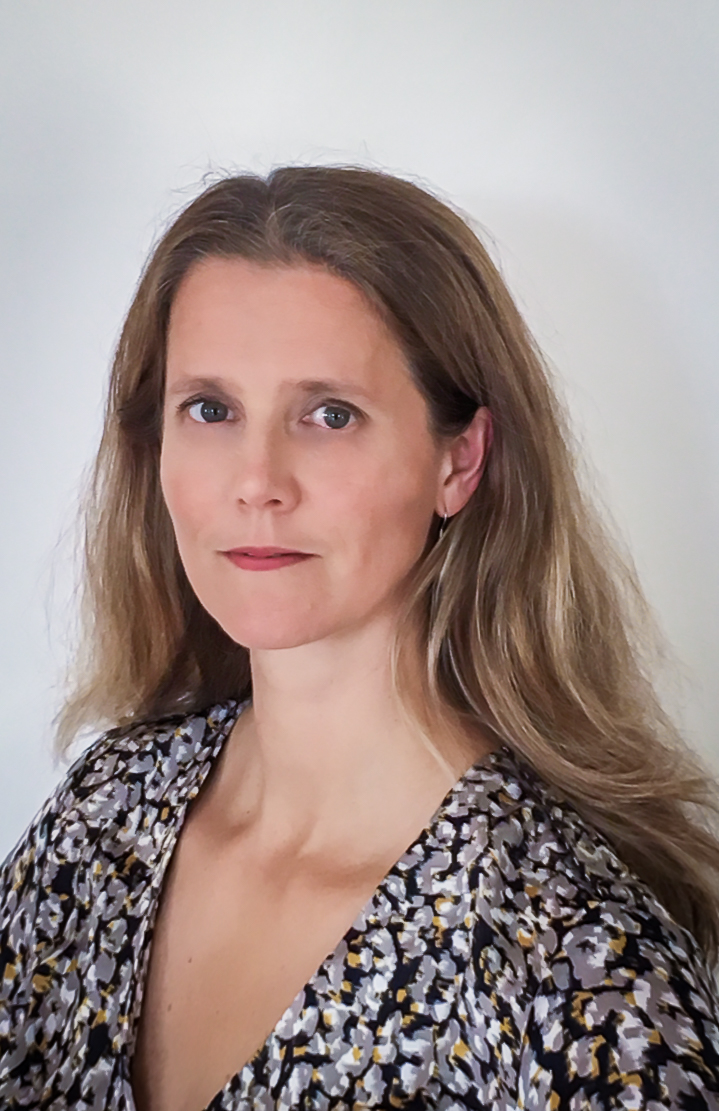 De toute évidence néfaste pour l’environnement et la biodiversité, la pollution de l’air l’est d’autant plus pour la santé des populations. Chaque jour, les « AASQA », les associations agréées de surveillance de la qualité de l’air, sont chargées d’étudier très précisément la composition de l’air et évaluent l’exposition des citoyens aux différentes composantes de l’atmosphère. « L’Agence nationale de santé publique a estimé en 2016 l’impact sanitaire de la pollution de l’air à 48 000 décès prématurés, soit 9% de la mortalité en France. Face à ce constat, il est urgent d’apporter des informations locales encore plus précises et contextualisées, tant pour permettre aux citoyens de connaître la composition de l’air qu’ils respirent, que pour aider les décideurs à protéger notre santé et notre environnement », introduit Claire Chappaz, adjointe unité innovation et développement chez Atmo Auvergne-Rhône-Alpes.
De toute évidence néfaste pour l’environnement et la biodiversité, la pollution de l’air l’est d’autant plus pour la santé des populations. Chaque jour, les « AASQA », les associations agréées de surveillance de la qualité de l’air, sont chargées d’étudier très précisément la composition de l’air et évaluent l’exposition des citoyens aux différentes composantes de l’atmosphère. « L’Agence nationale de santé publique a estimé en 2016 l’impact sanitaire de la pollution de l’air à 48 000 décès prématurés, soit 9% de la mortalité en France. Face à ce constat, il est urgent d’apporter des informations locales encore plus précises et contextualisées, tant pour permettre aux citoyens de connaître la composition de l’air qu’ils respirent, que pour aider les décideurs à protéger notre santé et notre environnement », introduit Claire Chappaz, adjointe unité innovation et développement chez Atmo Auvergne-Rhône-Alpes.
Unir ses forces pour la recherche sur l’air
Dans ce contexte, Atmo et l’INSA Lyon travailleront main dans la main dans le cadre d’une chaire de recherche et d’enseignement, avec l’ambition de lever les verrous scientifiques qui persistent en matière de surveillance de la qualité de l’air. « Le cadre donné par cette alliance nous permettra de concentrer nos recherches sur deux thématiques : d’abord sur la fiabilité des données relevées par les dispositifs de mesure innovants que sont les micro-capteurs, et puis nous concentrerons nos efforts sur la modélisation et la représentation de la qualité de l’air », explique Nicolas Rivière, porteur de la chaire à l’INSA Lyon. « Trois de nos laboratoires de recherche ont été sollicités pour s’impliquer dans les travaux. Le LIRIS1, pour son expertise sur le traitement de données et des apprentissages statistiques. Le Citi2, sur l’aspect de l’internet des objets et des capteurs embarqués. Et le LMFA3, pour son regard sur la simulation des écoulements et de la pollution », ajoute Nicolas.
Innovante, la chaire souhaite faire travailler ensemble des experts de domaines variés, de l’informatique à l’électronique, en passant par les mathématiques ou la modélisation numérique. « Avant le lancement officiel de cette chaire, des partenariats existaient déjà entre Atmo et certains de nos laboratoires. En réalité, une dizaine de laboratoires de l’INSA menait déjà des recherches en lien avec la qualité de l’air, extérieur comme intérieur », intime l’enseignant-chercheur.
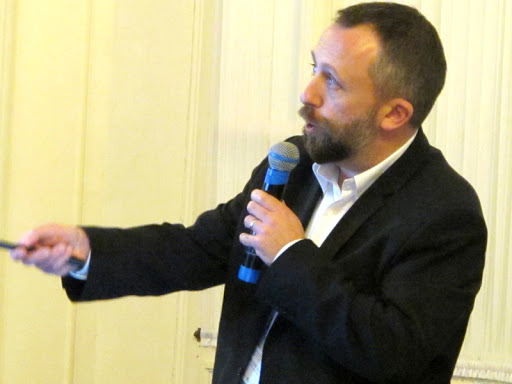 Une alliance pour la mobilisation et la sensibilisation citoyenne
Une alliance pour la mobilisation et la sensibilisation citoyenne
S’il est largement accepté que la pollution atmosphérique impacte négativement la santé, aujourd’hui plus que jamais, les citoyens sont inquiets sur la qualité de l’air qu’ils respirent. Mais cette préoccupation n’a pas toujours été si forte. Pour Nicolas Rivière, une explication existe. « L'air que nous respirons et sa qualité ont un impact direct sur nos santés, au même titre que la nourriture que nous mangeons ou l'eau que nous buvons. Pourtant, respirer ne demande pas de réflexion, à la différence de faire ses courses. Cela met souvent les préoccupations liées à la qualité de l'air sur un plan différent, même pour des citoyens très engagés en matière d'environnement, comme le sont de plus en plus nos élèves-ingénieurs. Faire connaître les pratiques et faire prendre conscience des expositions est important », explique-t-il.
L’ambition seconde des porteurs de l’alliance est d’associer les avancées des recherches à des actions de mobilisation et de sensibilisation qui pourraient prendre la forme d’ateliers de conception de capteurs, de création de supports de visualisation en temps réel et de contrats doctoraux… Le programme « air et engagement sociétal » co-conçu par Atmo et l’INSA Lyon à destination de tous les membres des parties prenantes, permettra de démultiplier la portée des recherches. « La participation citoyenne est quelque chose que nous mettons en avant depuis de nombreuses années car cela constitue un puissant levier de mobilisation et d’incitation à l’action. Le bénéfice pour la santé des populations et l’impact sur l’environnement se trouvera par une multitude d’actions, collectives ou individuelles. Et pour cela, il est impératif de faire connaître les leviers d'amélioration de la qualité de l’air », conclut Claire Chappaz.
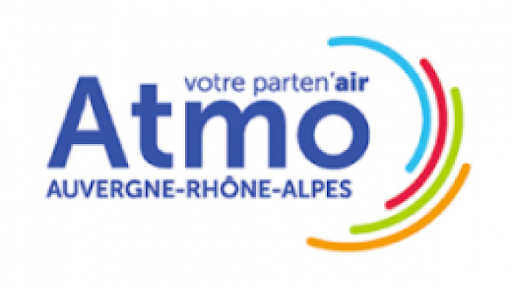 Le jeudi 19 novembre 2020, Frédéric Fotiadu, directeur de l’INSA Lyon et Éric Fournier, président d’Atmo Auvergne-Rhône-Alpes ont officialisé leur partenariat pluri-acteurs dans le cadre d’une Alliance reposant sur l’engagement d’expertises scientifiques et la mobilisation des élèves-ingénieurs au service d’un enjeu sociétal.
Le jeudi 19 novembre 2020, Frédéric Fotiadu, directeur de l’INSA Lyon et Éric Fournier, président d’Atmo Auvergne-Rhône-Alpes ont officialisé leur partenariat pluri-acteurs dans le cadre d’une Alliance reposant sur l’engagement d’expertises scientifiques et la mobilisation des élèves-ingénieurs au service d’un enjeu sociétal.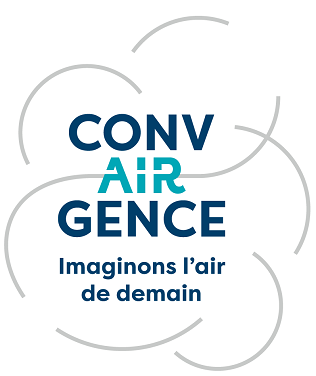 Associé à un mécénat conjointement porté par la Fondation INSA Lyon et le fonds de dotation pour l’air d’Auvergne-Rhône-Alpes ConvAIRgence, cette alliance contribue à engager la communauté INSA sur la transition écologique et à développer une science soutenue par les entreprises au bénéfice d’enjeux sociétaux. « Des ambitions précisément au cœur de la nouvelle stratégie de notre établissement », souligne le directeur de l’INSA Lyon.
Associé à un mécénat conjointement porté par la Fondation INSA Lyon et le fonds de dotation pour l’air d’Auvergne-Rhône-Alpes ConvAIRgence, cette alliance contribue à engager la communauté INSA sur la transition écologique et à développer une science soutenue par les entreprises au bénéfice d’enjeux sociétaux. « Des ambitions précisément au cœur de la nouvelle stratégie de notre établissement », souligne le directeur de l’INSA Lyon.  La Fondation INSA Lyon et ConvAIRgence offrent aux entreprises et acteurs socio-économiques l’opportunité d’accompagner l’INSA Lyon et Atmo Auvergne-Rhône-Alpes pour relever ensemble les défis scientifiques indispensables à une amélioration durable de la qualité de l’air de notre région, « à la croisée des mondes académiques, économiques et l’intérêt général », précise Alexis Méténier, Directeur de la Fondation INSA Lyon.
La Fondation INSA Lyon et ConvAIRgence offrent aux entreprises et acteurs socio-économiques l’opportunité d’accompagner l’INSA Lyon et Atmo Auvergne-Rhône-Alpes pour relever ensemble les défis scientifiques indispensables à une amélioration durable de la qualité de l’air de notre région, « à la croisée des mondes académiques, économiques et l’intérêt général », précise Alexis Méténier, Directeur de la Fondation INSA Lyon.Plus d’informations : www.fondation.insa-lyon.fr
- En savoir plus, lire le communiqué de presse : Alliance ATMO_INSA Lyon : l’air, notre bien commun : un enjeu de santé & d’innovation, une mobilisation citoyenne !
1Laboratoire d’informatique en images et systèmes d’information (INSA Lyon, Lyon 1, Lyon 2, ECL, CNRS)
2Centre d’innovation en télécommunications et intégration de service (INSA Lyon, INRIA)
3Laboratoire de mécanique des fluides et d’acoustique (ECL, INSA Lyon, Lyon 1, CNRS)
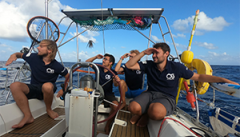
Recherche
Plastics, man and the sea
« Homme libre, toujours tu chériras la mer !
La mer est ton miroir1 »
'Free man, you will always love the sea! The sea is your mirror’ 1
For nine months, they sailed across the North Atlantic. Between crazy dreaming and scientific awareness, four students from the Rhone-Alpes region had hoisted the mainsail from Concarneau to the West Indies, crossing the 7th continent, ‘the plastic monster’. A phenomenon symptomatic of a proven environmental emergency, the continent of plastics is still poorly known. On the occasion of World Oceans Day, Guillaume Marcelin, crew member and student at INSA Lyon, looks back on his trip. Let's turn to a sad reality.
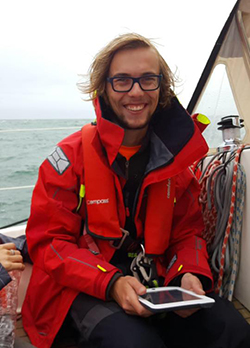 June 2018. On board the ‘Researcher’, Guillaume Marcelin, a fifth-year student in the computer science department at INSA Lyon, Cédric and Grégoire, students at ENS Lyon, and Adrien, from Ensimag-INP Grenoble, are embarking on a crazy adventure: crossing the North Atlantic to study the impact of plastic pollution. From Brittany, heading for the Azores and then the West Indies, the student crew spent nine months on a 35-foot 2 sailing boat. ‘The ExploraGyre project was born thanks to a childhood friend studying at the ENS. I knew nothing about the maritime world! I trusted the captain because at the time, it was above all the madness of the project that attracted me. In the beginning we wanted to sail, and naturally we gave this trip a scientific dimension. The ocean is full of beauty, but it is also the first victim of global warming’, explains Guillaume Marcelin.
June 2018. On board the ‘Researcher’, Guillaume Marcelin, a fifth-year student in the computer science department at INSA Lyon, Cédric and Grégoire, students at ENS Lyon, and Adrien, from Ensimag-INP Grenoble, are embarking on a crazy adventure: crossing the North Atlantic to study the impact of plastic pollution. From Brittany, heading for the Azores and then the West Indies, the student crew spent nine months on a 35-foot 2 sailing boat. ‘The ExploraGyre project was born thanks to a childhood friend studying at the ENS. I knew nothing about the maritime world! I trusted the captain because at the time, it was above all the madness of the project that attracted me. In the beginning we wanted to sail, and naturally we gave this trip a scientific dimension. The ocean is full of beauty, but it is also the first victim of global warming’, explains Guillaume Marcelin.
Crossing the ocean to study plastic pollution, yes. But on board a safe and sustainable ship. ‘By raising funds through our association, Oceasciences, we managed to reconfigure the security elements of the Researcher, which dated from 1992 and was not intended for the high seas. Solar panels provided the energy used for navigational instruments and scientific experiments. We also installed a water recovery system for our daily use. We left with the bare necessities and rather weak equipment’, admits Guillaume, the project's technical manager. ‘When the autopilot failed us, we had to find backup solutions so that we didn't exhaust ourselves at the helm for ten hours of sailing. The key word was resourcefulness, but in the marine world, mutual aid is very important. These meetings with seafarers and fishermen have enabled us to raise their awareness of the environmental cause’.
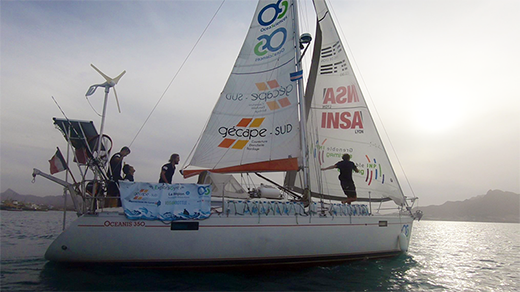
At the stern of the Researcher, navigating in the ship's tracks, two buoys overhanging a manta net: in order to determine the concentration and different types of micro-plastics present in the water, the crew left the measuring tool behind. Similar to a large sock, the fine-mesh net caught small particles as they passed through the water, which the scientific crew collected and incorporated into their analysis on their return to France. ‘Collection, when weather conditions allowed the net to be cast, was always terrifying. It was made up of small elements, which looked like pebbles or pieces of mother-of-pearl. In reality, it is plastic waste that disintegrates under the effects of friction, current, wind and the sun's radiation’, explains Guillaume. Deceptive and invisible, plastic pollution reaches into every corner of planet earth, right down to the seas and oceans. Every year, approximately 4 and 12 million tonnes of plastic are discharged into the water. Sometimes as large as plankton, fish ingest this plastic debris and find themselves contaminated, as the students' research shows. ‘The other important part of our scientific journey consisted of catching fish, first for our personal consumption and then for our research. It was a question of dissecting them and analysing the inside of their stomachs. We noted that 24% of the fish caught were contaminated by plastic particles’, notes the student sadly.
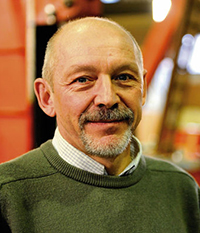 By accumulating in the heart of the oceanic gyres, these eddies of ocean currents, the plastic waste from human activity is dispersed in our oceans, so plentiful that it forms real continents. From dry land to the bottom of the sea, how could this be possible? For Bernard Chocat, Professor Emeritus at INSA Lyon and a specialist in sustainable water management, the equation is simple. ‘All it takes is a gust of wind or rain for the cigarette butt3 you have just thrown away to end up in a river and then the sea. We tend to think that the sewerage grids of our cities are capable of swallowing anything and everything, because when it reaches the network, the waste clogs the sewage treatment system, which overflows. The problem is the same for a wipe or a cotton swab flushed down the toilet. Treated in a unitary network, rainwater and domestic water are collected and disposed of in the same network. However, the capacity of our treatment plants is not suited to intense flows on very rainy days, for example. The excess waste water is disposed of by storm overflows, directly to the natural environment where our waste is not filtered. In the case of a separate treatment network, rainwater, and therefore the butt thrown on the ground, is transported directly to the natural environment’, warns the Professor Emeritus, drawing attention to the importance of everyone's actions in reducing the consumption of plastic waste on a daily basis.
By accumulating in the heart of the oceanic gyres, these eddies of ocean currents, the plastic waste from human activity is dispersed in our oceans, so plentiful that it forms real continents. From dry land to the bottom of the sea, how could this be possible? For Bernard Chocat, Professor Emeritus at INSA Lyon and a specialist in sustainable water management, the equation is simple. ‘All it takes is a gust of wind or rain for the cigarette butt3 you have just thrown away to end up in a river and then the sea. We tend to think that the sewerage grids of our cities are capable of swallowing anything and everything, because when it reaches the network, the waste clogs the sewage treatment system, which overflows. The problem is the same for a wipe or a cotton swab flushed down the toilet. Treated in a unitary network, rainwater and domestic water are collected and disposed of in the same network. However, the capacity of our treatment plants is not suited to intense flows on very rainy days, for example. The excess waste water is disposed of by storm overflows, directly to the natural environment where our waste is not filtered. In the case of a separate treatment network, rainwater, and therefore the butt thrown on the ground, is transported directly to the natural environment’, warns the Professor Emeritus, drawing attention to the importance of everyone's actions in reducing the consumption of plastic waste on a daily basis.
Crossing the Atlantic, the ultimate mission of the four students on the Researcher's crew was to raise awareness. By engaging with different audiences, through scientific and ecological approaches. ‘We met students in the West Indies, in schools and alliances françaises. Two schools in the Lyon region, in Givors and Fitilieu, also followed our adventures on a daily basis. During the trip, we also did some advocacy work in ports and markets and then we raised awareness among the sailors we met on a daily basis of the fact that fishing is also a major source of plastic waste. Understanding how waste ends up in the ocean is certainly the first step towards being able to avoid causing this pollution ourselves’, adds Guillaume.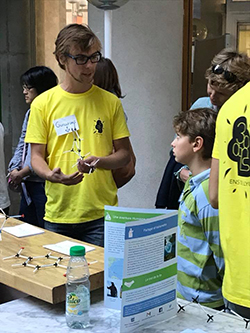
If the end of the journey was a delicate one for the four crew members, the return to dry land left them with a taste for change. ‘After nine months, with four people in a monohull a few metres long, there was tension. We just wanted to go home. But everything we had seen and experienced during those months had given us the direction of what we wanted to accomplish on our return: to help change the situation’, concludes the INSA Lyon student.
Should the ocean be left to rest? [Pop'sciences Forum]
On the occasion of World Oceans Day on 8 June, the University of Lyon organised a series of conferences on the future of the sea bed.
1 Charles Beaudelaire, Les fleurs du mal, Paris, Éditions Michel Lévy Frères, 1868, p. 105.
2 10 metres long
3 The filter of a cigarette butt is usually made of cellulose acetate, a plastic material.
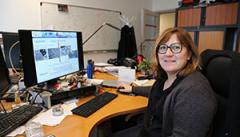
Recherche
Public health, environment and tribology
How can we reduce the emission of wear particles? By, for example, observing the transport sector from every angle, as tribologists do, anxious to provide answers to the problem of air quality in order to preserve people's health.
Pollution record in New Delhi on Sunday 3 November. With a concentration of fine particles more than thirty-two times higher than the WHO recommendations, the Indian capital has set a grim record. Between motor traffic, industrial emissions and smoke from agricultural burning in neighbouring regions, New Delhi is choking and the air polluted.
‘It's far from home but it should concern us’, says Sylvie Descartes, researcher at the Contact and Structure Mechanics Laboratory (LaMCoS) at INSA Lyon. ‘Greater Lyon regularly records high pollution levels and we must contribute through our research to avoid reaching such extremes’, she adds.
Taking many factors into account
But why is air quality of interest to this tribology scientist? ‘It is a decisive indicator of air pollution with fine or ultrafine particles. A significant part of this pollution is due to transport’, replies the researcher.
The contact of vehicle tyres driving on asphalt, the friction of the brake pads tightened on the disc during braking and the wear of road surfaces are all part of the equation. It's all about tribology and the flow of particles, particles that we also need to know how to collect, analyse and study. ‘Our job as tribologists is complex and unique in having to take many factors into account: mechanical, physico-chemical, material, thermal - interdependent and interacting factors, multi-scale variables. How and where can these particles be measured (size from nanometres to millimetres)? Indeed, once emitted out of contact, these particles will continue to evolve according to the environment (chemical interactions to form new components, photosensitivity, fragmentation, decomposition, agglomerates, etc.). And in these cases, how can we trace them back to their origin in contact? How can they be characterised when not all the standards are in place? How can we reduce their emissions? How can we control wear, in a nutshell?’, she asks.
‘Our job is to construct a story’
Although researchers have mastered the intellectual approach, it is the various possible scenarios that complicate the analysis. ‘A brake pad, for example, is made up of several components, all of which have a role. If, in order to reduce wear or to comply with a new standard, we decide, for example, to remove a component that plays a heat dissipating role in the operation of the brake, a solution must be found that performs the same role through awareness of the causes and consequences of this change, while maintaining the efficiency and safety of the device’, explains Sylvie Descartes.
This is a wide remit for tribologists working on the subject, who are grappling with concepts of mechanics, physics, chemistry and even climatology. ‘For example, when there is no wind, the particles remain concentrated in the same place. This can be very dangerous in the case of air pollution, as was the case in London, with the Smog of 1952. Our job is to understand the various elements, arrange them and construct a story’, sums up Sylvie, guided by the desire to deal with the problem at source.
To preserve people's health
Because when it comes to fine/ultrafine particles, it's all about human health. How can we measure the impact of these particles on the human body? How do we know whether fine particles are responsible for respiratory problems such as asthma, or worse? ‘Research is also being carried out at LaMCoS in this area, in partnership with hospitals in particular. The story never ends in tribology, and in this particular case of air pollution, tribologists must also try to find solutions to limit emissions’, she concludes.
In Lyon, over the past year, the biggest peak in fine particle pollution was recorded in February, with a daily average of 25.2 micrograms of fine particles PM*2.5 per cubic metre of air, when the World Health Organisation (WHO) recommends that this figure should not exceed 25 micrograms.
Other pollutants threaten air quality on an ongoing basis. One example is nitrogen dioxide (NO2), a pollutant gas from diesel engines. France, in the European Commission's sights on this subject, has just been criticised by the European Court of Justice for regularly exceeding the NO2 threshold limit. 24 French cities are affected, including Lyon

The 7th World Tribology Congress (WTC 2021) will take place in Lyon from 5 to 10 September, 2021. The congress venue is the Lyon convention centre, between the Rhône and the Parc de la Tête d'Or, in the heart of Cité Internationale. WTC 2021 is organised by two research laboratories in the region, the Contact and Structure Mechanics Laboratory (LaMCoS) at INSA Lyon and the Tribology and Systems Dynamics Laboratory (LTDS) at the ECL, with the support of the French Association of Mechanics (AFM) and the International Tribology Council (ITC).
For more information, please contact the project steering committee: Michel Belin, Philippe Kapsa, Philippe Vergne.
https://www.wtc2021.org/* Fine particles are particles with a diameter of less than 2.5 micrometres. They are referred to as PM 2.5.
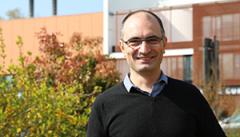
Recherche
Pollution atmosphérique : mesurer les risques grâce à la modélisation cartographique
Greenpeace a récemment publié une carte interactive dénonçant les niveaux de pollution atmosphérique aux abords des écoles lyonnaises. Pour mener son étude, l’ONG a croisé deux cartes : une première réalisée en 2017 par l’observatoire Atmo Auvergne Rhône-Alpes et une deuxième cartographie des établissements accueillant des enfants. Matérialisés en quatre catégories, du vert au rouge, la nouvelle carte affiche les niveaux d’exposition au dioxyde d’azote présents dans l’air.
Le logiciel à l’origine de la modélisation de ces données est SIRANE, créé par Lionel Soulhac, professeur au Département Génie Mécanique de l’INSA Lyon et Directeur adjoint du Laboratoire de Mécanique des Fluides et d’Acoustique, le LMFA1. Il explique l’importance de la modélisation de la pollution atmosphérique pour répondre aux enjeux d’environnement et de santé.
En ville, des panneaux lumineux renseignent sur la qualité de l'air en temps réel. Variant de 1 à 10 et du vert au rouge, les « indices Atmo » sont le résultat de mesures en stations et de logiciels de simulation comme l’explique Lionel Soulhac.
« La pollution atmosphérique, qu’elle soit chronique ou accidentelle, est très diffuse et difficile à mesurer. Au LMFA, on l’étudie de façon expérimentale, grâce à des maquettes à échelle réduite et grâce à la modélisation numérique avec le logiciel SIRANE par exemple. »
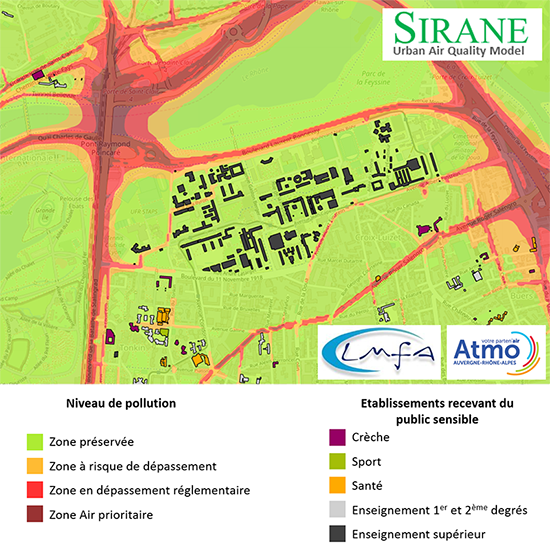
Lionel étudie les risques de la pollution atmosphérique depuis quelques années. Pour créer une cartographie de la qualité de l’air, le logiciel combine plusieurs grandes familles de données comme la géographie du site, les producteurs de polluants comme les industries et d’autres facteurs de propagation et de dilution comme la météorologie.
« SIRANE travaille en croisant les données pouvant influencer la qualité de l’air : le trafic routier, les centrales de chauffage, le relief, les bâtiments, le vent qui vient du nord ou d’ailleurs… Et nous croisons ces données avec les mesures réelles de la pollution pour obtenir une modélisation en 2D ou 3D. »
En collaboration avec deux enseignants-chercheurs du Centre d’Innovation en Télécommunications et Intégration de services (CITI), Hervé Rivano, Walid Bechkit et Lionel Soulhac travaillent au développement de micro-capteurs de mesure de l’air.
« Aujourd’hui, les outils de mesure de la qualité de l’air coûtent très cher à fabriquer et à exploiter. Les micro-capteurs sont une solution économique et pratique. Bientôt, nous pourrions avoir ces capteurs jusque dans nos téléphones, permettant d’alimenter les vecteurs de communication auprès du grand public, comme les applications mobiles2 ou les girafes en ville. Les mesures de la qualité de l’air seraient plus représentatives de la réalité. »
Les cartographies numériques ne sont pas seulement utiles à des fins informationnelles. Elles sont de véritables outils d’aide à la décision.
« Les cartes nous permettent de simuler des scénarios en prévision du comportement de la pollution atmosphérique dans 10 ou 20 ans. Les institutions publiques, les organismes spécialisés en sécurité de l’air et les entreprises utilisent ces outils de modélisation pour mettre en place des actions correctrices. »
Plusieurs projets en santé et sécurité sont en cours, par exemple en relation avec le Centre Léon Bérard pour étudier les corrélations entre épidémies, maladies et pollution atmosphérique.
« Il s’agit d’aider les spécialistes de la santé et de la sécurité à apprivoiser une menace qui peut être invisible à l’œil nu. Nous travaillons également avec des sapeurs-pompiers à l’élaboration de lunettes de simulation capables d’avertir des risques toxiques ou radiologiques grâce à la réalité augmentée. »
1 INSA/Lyon 1/ École Centrale de Lyon/CNRS
2 L’application « Airtogo » de l’observatoire Atmo Auvergne Rhône Alpes utilise également le logiciel SIRANE

